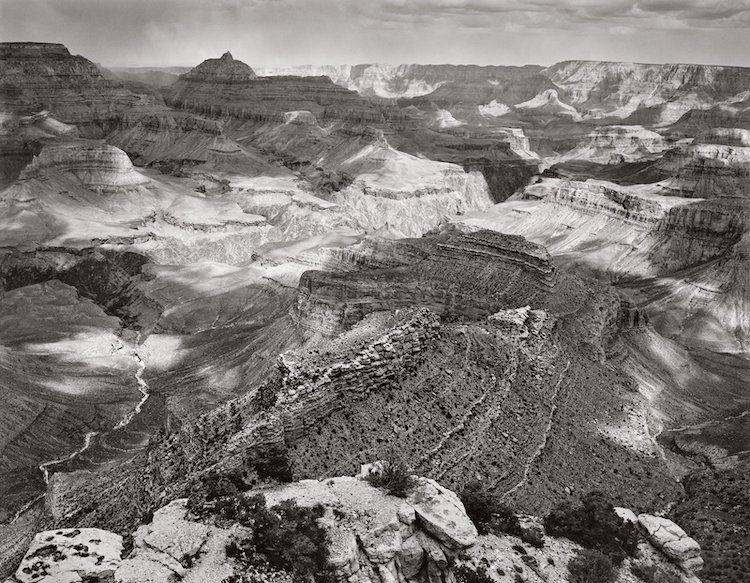
“Storm From Shoshone Pt.,” 1995. Grand Canyon National Park, Arizona
Travel posters can help commemorate the great places that people have visited. And for those who have yet to go to a locale, a travel poster can entice them to visit. In the late 1980s, photographer Lynn Radeka came up with the idea of creating posters featuring his black-and-white images of the National Parks in the western region of the United States. The concept was to offer a “fine art” interpretation of the parks, which was different than the color posters commonly offered to visitors.
The resulting images are beautiful monochromatic portraits of the incredible rock formations and canyons in southern Utah, Arizona, California, and beyond. Radeka didn’t stop there, however, and has continued to shoot black and white photos since then. Three of his most striking pictures span decades and are of Horseshoe Cayon in Canyonlands National Park, Land of Standing Rocks (also in Canyonlands), and Monument Valley, right on the border of Utah and Arizona.
Although the landscape portraits depict different places, Radeka has united them in his visual language. Each photo, whether it’s a shot of a far-off vista or something much closer, has a certain duality to it. There are elements of hard and soft, coarse and delicate. Chunks of rock, for instance, rise from the flat ground but are surrounded by fluffy clouds. In Radeka’s Horseshoe Canyon piece, we get an up-close look at the carved rock punctuated with the exquisite beauty of bristly desert plants. This is made more noticeable because the photos are in black and white, as we can admire the form of the landscape over its color.
Scroll down for more work by Radeka—including his recollections of three of his images. If you’d like to learn to shoot like him, he has photography workshops going on during 2022.
Photographer Lynn Radeka captures stunning black and white photos of the western region of the U.S., and he’s shared his recollection of three of his beautiful images:
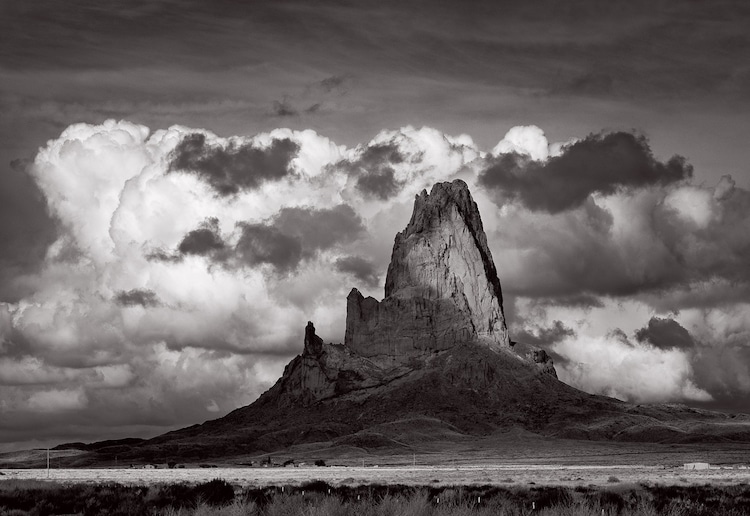
“Storm Clouds, Monument Valley,” 2015. Southern Utah
“As I was driving north from Arizona, a dramatic bank of thunderheads were moving rapidly in the distance. I saw the large monolith known as Agathla Peak and watched as the beautiful storm clouds moved closer. Quickly pulling off the highway, I jumped out of my classic Bronco and set up my Sony A7R digital camera on a tripod. I remember taking 2 or 3 exposures but then the positioning of the clouds above the peak became even more ideal. In a rush against time I quickly moved the tripod to get a better position and made a 4th exposure at the exact second when everything looked just right.
I used this 4th exposure and converted the RAW file to black and white using OnOne Perfect B&W software. I optimized the file in Photoshop. In my opinion, this image in black and white is far superior to the original color RAW version.”
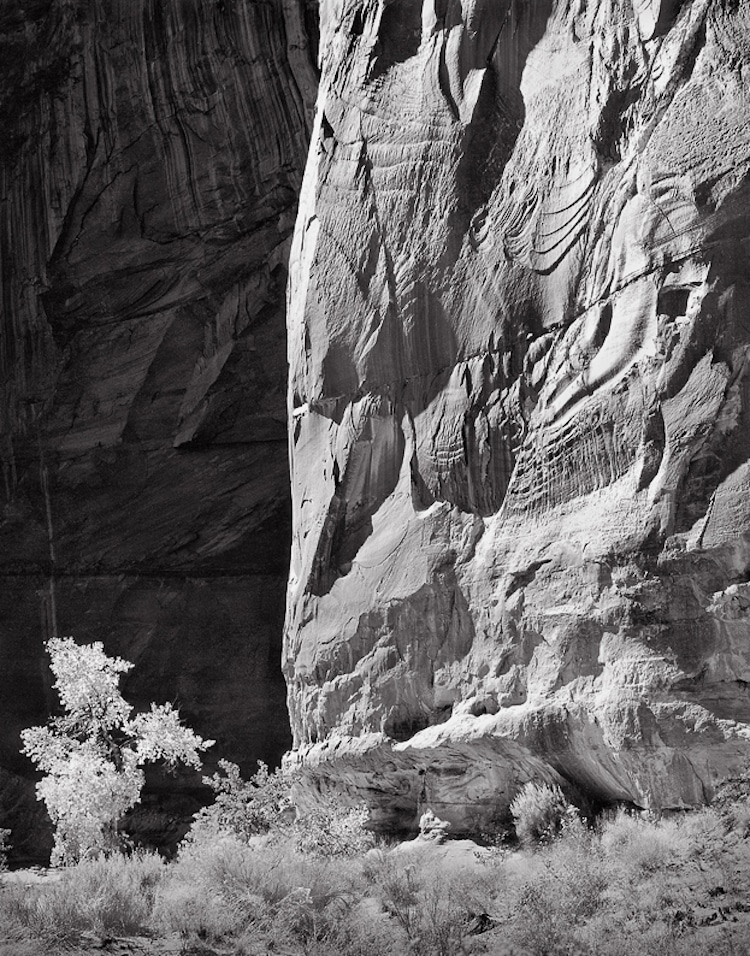
“Horseshoe Canyon,” 1985. Canyonlands National Park, Utah
“I made this image using 4×5 Tri-X film and Kodak HC-110 developer. I used a yellow filter with a wide-angle lens. The filter helped maintain the brightness of the cottonwood tree which had bright yellow autumn leaves.
The print is made using a grade 3 paper and various film contrast masks for local refinement of various areas. The resulting print from this negative is rich and fully detailed. I like the visual irony in this image—delicate vs. hard, bright against dark, and large against small.”
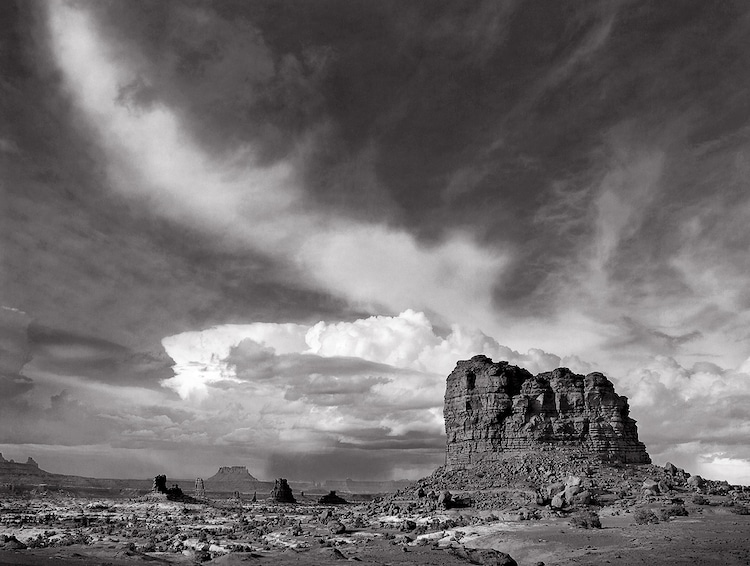
“Land of Standing Rocks,” 1988. Canyonlands National Park, Utah
“In 1988, I resolved to make the journey into the Maze District of Canyonlands National Park. The “Jeep” road is long and very rough, absolutely requiring 4WD and high clearance.
About five miles before the Doll House camp area, photogenic standing rocks and magnificent buttes filled the vast distance. I noticed some thunderhead clouds in the distance and a curved band of clouds was moving from left to right. I recognized the potential for a good photograph but had to act quickly because the clouds were moving very fast. In a near-panic mode, I focused my 4×5 view camera, attached a yellow filter to my Schneider 121mm Super Angulon lens, calculated the exposure, and shot the image on Tri-X film. I attempted to duplicate the exposure but time was not on my side.
Because of the nature of this subject, the print is very difficult to make. In order to satisfy my vision for the print, I currently use a series of pin-registered film contrast masks to coax specific local contrasts and to smooth out the image. This image was used as a poster for Canyonlands National Park.”
Radeka’s images span decades and locales.
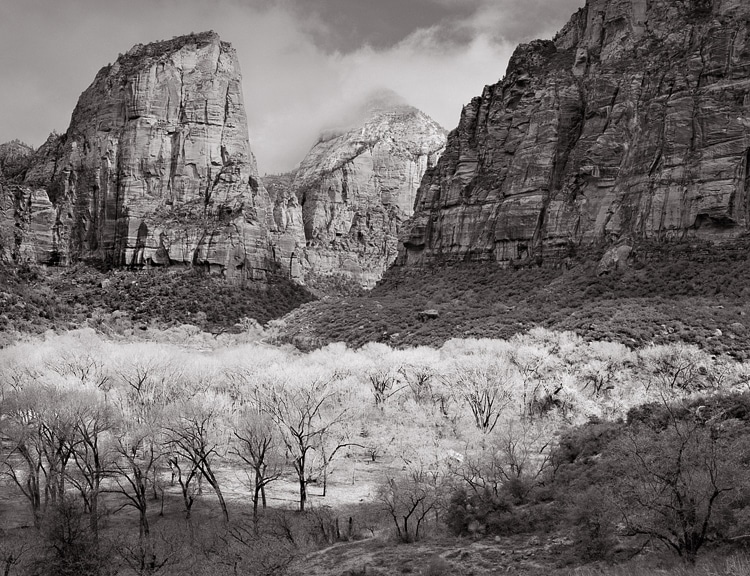
“Zion Canyon, Autumn,” 1994. Canyonlands National Park, Utah

“Pinyon Pine and Sandstone,” 2004. El Malpais National Monument, New Mexico
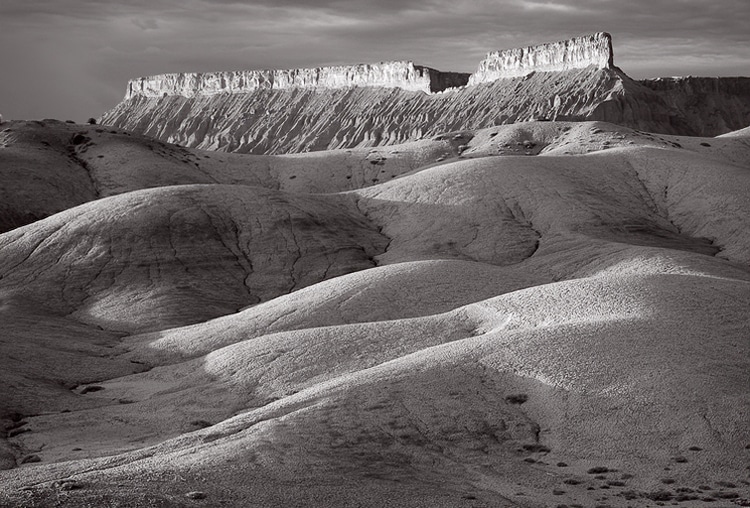
“Sunrise Near Factory Butte,” 2018. Southern Utah
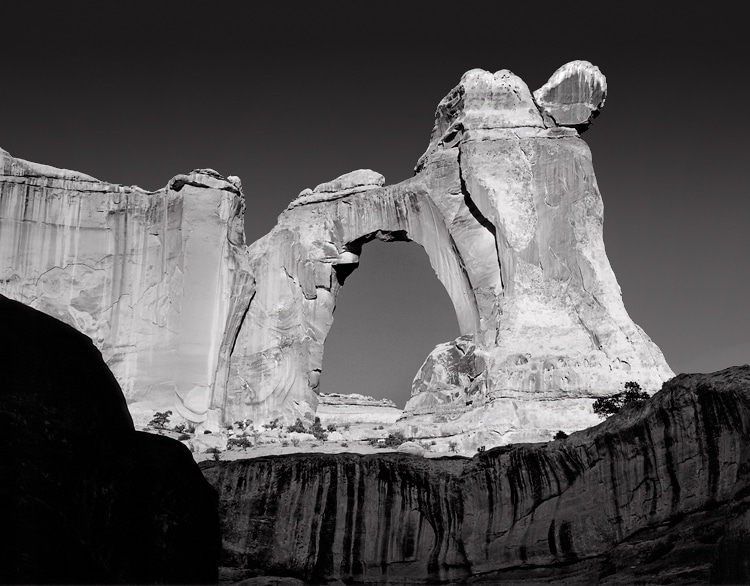
“Sunrise, Angel Arch,” 1985. Canyonlands National Park, Utah
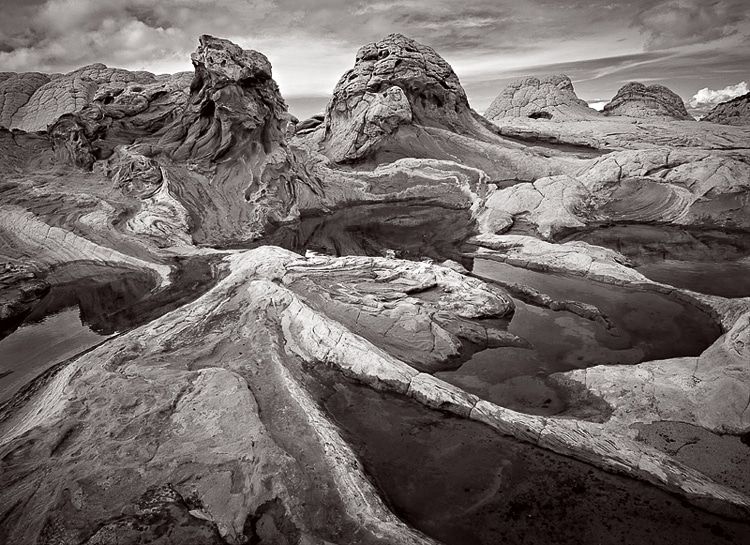
“Forms, White Pocket,” 2015. Vermillion Cliffs Wilderness, Arizona

“Ponderosa Pine, Angels Landing,” 1994. Zion National Park, Utah
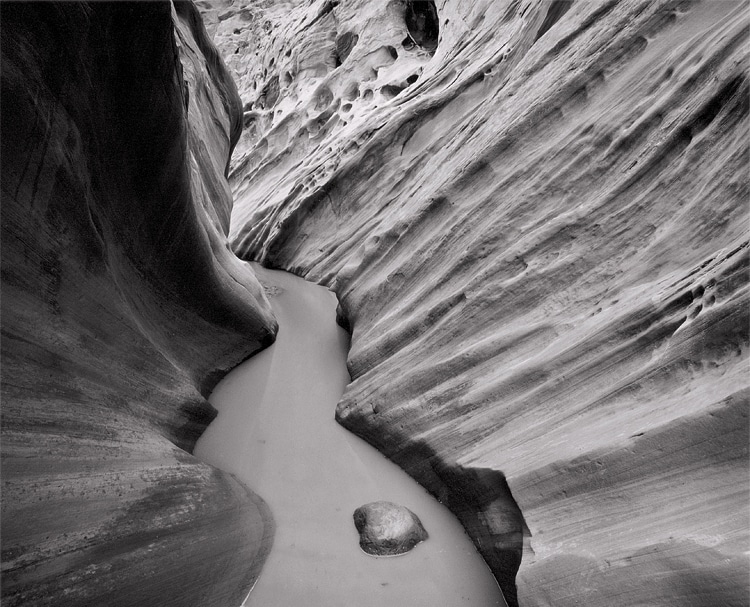
“Little Wild Horse Canyon,” 1987. San Rafael Swell, Utah
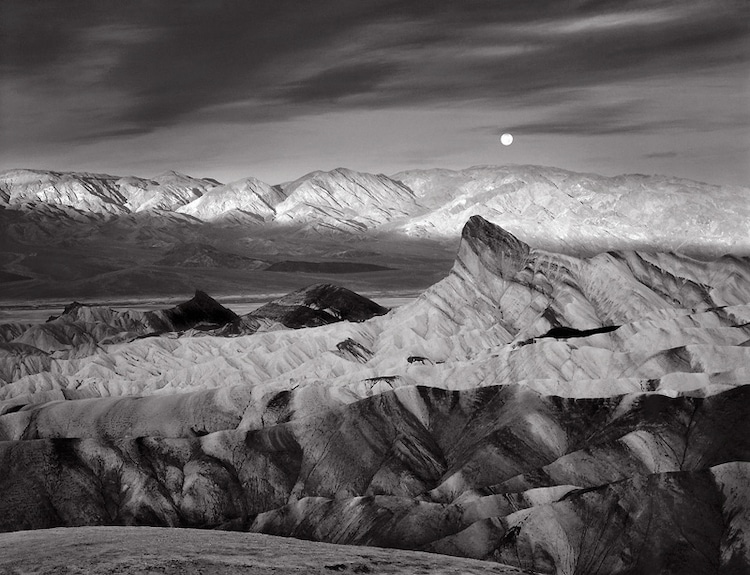
“Moon Over Zabriskie Point,” 1980. Death Valley National Park, California
Lynn Radeka: Website
My Modern Met granted permission to feature photos by Lynn Radeka.
Related Articles:
Sweeping Beauty of Zion National Park Honored in Landscape Art Exhibition
Oldest Living Ranger in the National Park Service Celebrates Her 100th Birthday
20+ National Park Portraits Celebrating the Rainbow-Colored Lands of the U.S.
10 Facts About Ansel Adams, the Pioneering Photographer and Environmentalist
